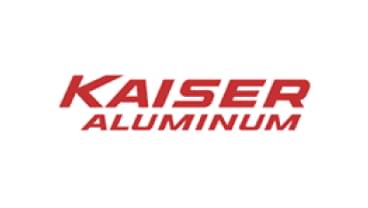Kaiser Aluminum
Kaiser Aluminum made and sold asbestos-containing products, including firebrick and refractory cement, from the 1950s through the 1970s. Asbestos litigation forced it to file for bankruptcy in 2002. A trust was created with $1.2 billion to handle future asbestos claims.

Kaiser Aluminum’s History with Asbestos
Kaiser Aluminum, an aluminum refining and product manufacturing company, was founded by Henry J. Kaiser in 1946. Beginning with two reduction facilities and an aluminum rolling mill, Kaiser Aluminum expanded to include mining and manufacturing processes and the distribution of aluminum, a system known as vertical integration.
As part of its integration model, Kaiser acquired bauxite mines and set up refineries where the mined bauxite was transformed into alumina, which was crafted into aluminum and used to fabricate aluminum products. Because asbestos is resistant to high temperatures, the company used it to line vessels exposed to extreme heat during the refining process.
Kaiser and its subsidiaries manufactured asbestos-containing products from the 1950s until 1978. Many military veterans, mechanics, factory workers, tradesmen and consumers exposed to these products developed severe diseases such as mesothelioma and asbestosis.
During the 1950s, Kaiser produced asbestos-containing materials for the construction industry and the military. Most notably, it produced asbestos fireboard for U.S. Navy ships.
In recent decades, Kaiser Aluminum’s basic structure and direction have undergone revisions. The company stopped its bauxite and alumina operations and has focused on high-grade aluminum product manufacturing such as aluminum components for the aerospace industry.
Kaiser Aluminum now owns 12 fabricating plants throughout the United States and Canada, and yields more than 600 million pounds of aluminum annually. In 2020, the company reported net sales for the previous year of $1.5 billion and employed more than 2,800 people.
Development of Kaiser Aluminum Trust
To handle the financial strain caused by asbestos litigation, Kaiser filed for Chapter 11 bankruptcy in 2002.
When the company emerged from bankruptcy in 2006, the Kaiser Aluminum & Chemical Corporation Asbestos Personal Injury Trust was established with $1.2 billion. The trust was formed to process, liquidate and pay all valid asbestos personal injury claims for which Kaiser has legal responsibility.
In April 2019, the payment percentage was reduced from 35% to 25%, which remains substantially higher than most other asbestos trusts.

Get help paying for treatment and other expenses by accessing trust funds, grants and other options.
Access Funds NowAsbestos Litigation Involving Kaiser Aluminum
Kaiser had faced more than 120,000 asbestos-related claims prior to filing for bankruptcy. Some of these lawsuits were filed by former Kaiser employees, while others have been filed by end users of Kaiser’s asbestos products, including U.S. veterans of the armed forces.
- In 2001, the Superior Court of the State of Washington King County awarded more than $2.5 million to John Henderson. Henderson filed a lawsuit against Kaiser and other companies, claiming their asbestos products caused him to develop mesothelioma.
- In 1996, a Louisiana court awarded more than $72,300 to Julius Egan, who formerly worked for Kaiser Aluminum as a welder and later developed mesothelioma. Egan filed a lawsuit against Kaiser and other companies, claiming exposure to their asbestos products caused his mesothelioma. While working at Kaiser, Egan worked in and around the carpenter shop where asbestos products were cut.
- The Kaiser trust was among several companies that paid settlements to Henry Barabin following his 2007 mesothelioma lawsuit. Barabin developed mesothelioma after years of work for a refinery and paper mill. In the lawsuit, Barabin said he was exposed to amphibole asbestos in insulation and chrysotile asbestos in dryer felts. Kaiser was one of at least 17 companies that settled the case and agreed to a payout of $39,675.
Kaiser Aluminum’s Asbestos Products
Kaiser Aluminum manufactured or sold the following asbestos-containing products:
- Birdsboard
- Blast Furnace Castable Insulating Cement
- Coelex 60 Unitab Brick
- Hard Top Finishing Cement
- Kaiser Mineral Wool Cement
- Metal Encased Firebrick
- M-Block Insulation
- Panels
- Plastic Chrome Ore
- Plastic Insulation
- Plastic K-N Refractory Cement
- Raw chrysotile asbestos fibers
- Siding
- Super D Block Insulation
- Vee Block Mix
- Vee Block Insulation
Kaiser manufactured these products from the 1950s until the late 1970s. The company manufactured asbestos-containing firebricks and refractory cement and sold rebranded asbestos products manufactured by other companies.
A number of Kaiser subsidiaries produced asbestos products for the shipbuilding, construction and air and space industries.
Some of these products contained amosite asbestos, which is considered a more carcinogenic form of asbestos compared to other types. For example, Super D Block Insulation contained 6% amosite.
Occupations at Risk of Exposure to Kaiser Aluminum’s Asbestos Products
The following occupations faced risk of exposure to asbestos products made by Kaiser Aluminum:
- Aerospace workers
- Asbestos miners
- Asbestos factory workers
- Boiler workers
- Brake and clutch mechanics
- Construction workers
- Electricians
- Foundry workers
- Furnace workers
- Insulators
- Maintenance workers
- Masonry workers
- Metal workers
- Pipefitters
- Plumbers
- Steamfitters
- U.S. veterans of the armed forces
- Welders
Kaiser exposed workers to asbestos by using the mineral during refining and fabricating operations until the U.S. Environmental Protection Agency classified asbestos as a carcinogen and issued a code of regulations restricting its use in the late 1970s.
During the process of refining alumina from bauxite, the materials must be heated to considerable temperatures, and the reduction vessels need an insulating agent to coat the external walls and isolate the heat. Asbestos, with its heat- and fire-retardant qualities and its low cost and durability, was an ideal choice for containing the heat involved in the reduction processes and for preventing overheating.
Through a variety of heat resistance and electricity isolation applications, asbestos also found its way into the actual fabrication of aluminum products manufactured for the aerospace and automotive industries.
The use of asbestos in aluminum production and fabrication affected workers in other industries as well. Kaiser’s asbestos products were used across many industries, including metal works, power generation, chemical processing, ship building, manufacturing, oil refining and paper production.
A 2022 report by the European Commission noted that in 2019 alone, over 70,000 workers died from past exposure to asbestos.
In 2015, an article from the British Medical Journal reported rates of asbestos-related deaths in Belgium between 2001 and 2009. According to the data, former metal workers are almost three times more likely to die of mesothelioma than the general population.
Recommended Reading


